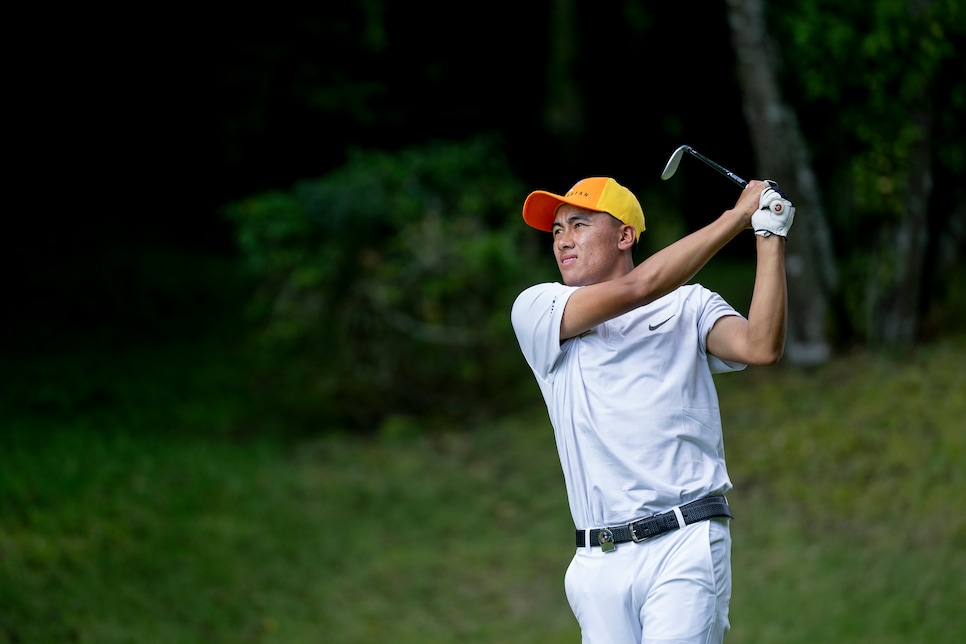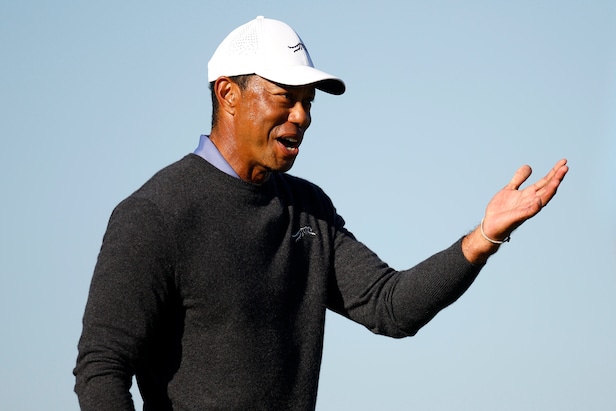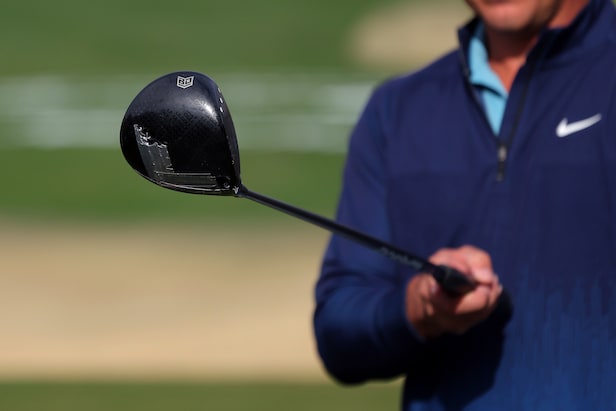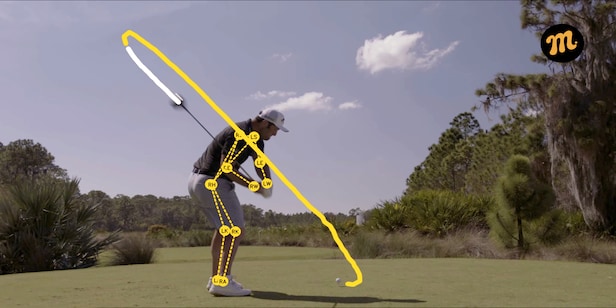Meet this 66-year-old from Lebanon who saw bombs dropping from the sky during his flight to compete in the Asia-Pacific Amateur – Australian Golf Digest

- by Admin
- October 3, 2024

GOTEMBA, Japan — For over 15 years the soul of Asia-Pacific Amateur Championship has been the journey its competitors have taken to get here. And boy, have there been some journeys. That the winner is afforded starts in the Masters and Open Championship are just the cherries on top—as life-changing as those major experiences are.
Look no further Rachid Akl. At 66, the veteran Lebanon amateur golfer is the oldest player in the field at the iconic Taiheiyo Club this week. Last Friday, Akl was sitting in his airplane seat ready to fly from Beirut to Jordan and onto Tokyo. When the plane was delayed, Akl began to wonder what caused the hold up. He looked outside and saw bombs dropping on the southern suburbs of Beirut. The explosions were targeting the militant group Hezbollah, which is in the midst of a devastating conflict with Israel.
“During the takeoff from Beirut, we heard from inside the plane, 10 or 15 rockets [landed] near us, I think 500 meters,” Akl said. This was only a week after Akl had won the Senior Cyprus Open in the middle of the Mediterranean. As the plane took off from Beirut, Akl saw enormous clouds of smoke.
But Akl was not going to miss his ninth start in the Asia-Pacific Amateur, even if he had to avoid checking his phone during practice rounds out of fear of distressing news. “I love to play golf. My life is golf. I wanted to represent my country in this tournament,” he says.
It’s not hard to see the reverence for which amateur golfers in the region have for the Asia-Pacific Amateur. Launched in 2009 by former Augusta National chairman Billy Payne in an effort to grow the game, it is jointly run by the home of the Masters and the R&A. The move quickly yielded results. Hideki Matsuyama, the 2021 Masters champion, won the Asia-Pacific Amateur in 2010 and 2011. The 2012 champion, Guan Tianlang of China, became the youngest player to make the cut in PGA Tour history at the 2013 Masters when he was 14 years and five months old.
This week, at the Taiheiyo Club, it’s being staged at the foot of Mount Fuji. Seve Ballesteros and Greg Norman were winners of the Taiheiyo Masters in their prime and Tiger Woods’ chipped in for eagle to join a playoff at the 2001 WGC World Cup.
Akl’s score and position on Day 1—a 96 to sit in last place—doesn’t reflect his ability. He’s a scratch golfer who plays out of the Golf Club of Lebanon, the nation’s only course. Earlier this year, he won a World Amateur Golf Ranking official event in Jordan.
On top of the leaderboard on Thursday was Indonesia’s Randy Bintang, a sublimely talented golfer who shares his last name with the most popular beer in his homeland. At the 2022 Asia-Pacific Amateur, he shot a 66 that included a championship record-equaling nine birdies.
“This is the biggest amateur tournament [I’ve] ever played, and this is my third here,” Bintang said Thursday. “I’m just starting to play my best. I’m really pleased with my game and the chance to play with the best players in the world.”
Dechen Lhendup of Bhutan plays a tee shot during Round 1 of the Asia-Pacific Amateur Championship at the Taiheiyo Club in Gotemba, Japan.
Chris Turvey
While the event excludes the top talent from the U.S. and Europe, there is some star power. Former Arizona State golfer Wenyi Ding—the amateur World No. 4 from China who is line for a DP World Tour card through its Global Amateur Pathway program—was the best player in the 120-strong field. He shot a first-round 67. Ding was among 35 former, current or future U.S. college golfers in the field. The 22 current collegiate golfers range from those at Stanford, Princeton, Purdue to the University of Florida.
Many of those are likely to turn pro. But the golfers who have been unearthed from nations with extremely limited access to golf are the success story of the championship.
There are 40 nations represented this week, from golf-rich countries like Japan, Australia, New Zealand, Thailand and Korea, to emerging golf markets like Vietnam and Malaysia. Perhaps the most inspiring story comes from Bhutan, a remote country tucked in the eastern Himalayas between China and India. It has mountains higher than 23,000 feet above sea level. Television only came to Bhutan in 1999. There are just four nine-hole courses in the entire country, led by Royal Thimphu Golf Club, which sits at 8,000 feet above sea level. Bhutan golfer Dechen Lhendup made his debut at the Asia-Pacific Amateur on Thursday and, while he shot 91, several competitors saw far greater golf from him during practice rounds. Lhendup has competed in the Bangladesh Amateur Open and the Nepal Amateur Open. He often teaches younger players in golf clinics and will bring his Asia-Pacific experience back to Bhutan.
Quinnton Croker, the reigning Australian Amateur champion, played a practice round with Lhendup. “His game is impressive [especially] if that’s what he’s got to practice [in Bhutan],” Croker said. “I think it’s a very special opportunity for some of those young fellas to really get an eye for what the world is like and what they can achieve.”
Enrique Dimayuga, of the Philippines, a college golfer at Southern Methodist, said: “For [players from remote countries], I think it’s awesome opportunity and one day, hopefully, they can be like a trailblazer for more people to follow.”
Augusta National chairman, Fred Ridley, and R&A chief executive, Martin Slumbers, were at the Taiheiyo Club on Thursday as part of their host duties.
“This predates Martin and me, to my predecessor Billy Payne,” Ridley said. “[He] brought the Olympic Games to Atlanta in 1996 and had a real-world view of sport. It was his idea, collaborating with the R&A, to start this championship. While it might have been somewhat of an unconventional idea at the time, I think it’s proven to pay a lot of dividends.”
This article was originally published on golfdigest.com
The Latest News
-
December 21, 2024‘Dream come true’: Emotional Test bolter on shock call-up and classy act from man he replaced
-
December 21, 2024‘Got this wrong’: Former skipper criticises selectors’ call
-
December 21, 2024The Kings horse Gilded Water wins at Randwick races
-
December 21, 2024Nick Kyrgios has chance to become first player ‘to do it all’, says tennis great in big statement about Aussie
-
December 21, 2024Australia retains Rose Bowl after rain-affected victory





